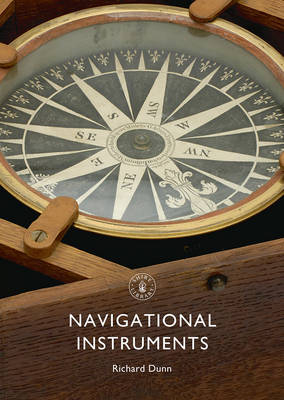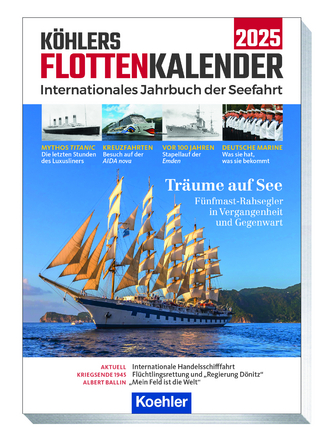
Navigational Instruments
Seiten
2016
Shire Publications (Verlag)
978-0-7478-1506-8 (ISBN)
Shire Publications (Verlag)
978-0-7478-1506-8 (ISBN)
With over two-thirds of the globe covered by water, the ability to navigate safely and quickly across the oceans has been crucial throughout human history. This book shows the solution of the infamous longitude problem, the impact of satellite positioning and other advances in navigation have brought together seafarers, artisans and more.
With over two-thirds of the globe covered by water, the ability to navigate safely and quickly across the oceans has been crucial throughout human history. As seafarers attempted longer and longer voyages from the sixteenth century onwards in search of profit and new lands, the tools of navigation became ever more sophisticated. The development of instruments over the last five hundred years has seen some revolutionary changes, spurred on by the threat of disaster at sea and the possibility of huge rewards from successful voyages. As this book shows, the solution of the infamous longitude problem, the extraordinary impact of satellite positioning and other advances in navigation have successfully brought together seafarers, artisans and scientists in search of better ways of getting from A to B and back again.
With over two-thirds of the globe covered by water, the ability to navigate safely and quickly across the oceans has been crucial throughout human history. As seafarers attempted longer and longer voyages from the sixteenth century onwards in search of profit and new lands, the tools of navigation became ever more sophisticated. The development of instruments over the last five hundred years has seen some revolutionary changes, spurred on by the threat of disaster at sea and the possibility of huge rewards from successful voyages. As this book shows, the solution of the infamous longitude problem, the extraordinary impact of satellite positioning and other advances in navigation have successfully brought together seafarers, artisans and scientists in search of better ways of getting from A to B and back again.
Richard Dunn is currently Senior Curator and Head of Science and Technology at the National Maritime Museum, having worked there since 2004, predominantly as Curator of the History of Navigation, and his publications include The Telescope: A Short History and Ships, Clocks & Stars: The Quest for Longitude (with Rebekah Higgitt).
Getting About on the Water / The Basic Tools / Going Further / The Longitude Found / The Age of Measurement / The Radio Revolution / Navigation in the Satellite Age / Further Reading / Index
| Erscheinungsdatum | 17.05.2016 |
|---|---|
| Reihe/Serie | Shire Library |
| Zusatzinfo | 27b/w; 77col |
| Verlagsort | London |
| Sprache | englisch |
| Maße | 149 x 210 mm |
| Gewicht | 181 g |
| Themenwelt | Natur / Technik ► Fahrzeuge / Flugzeuge / Schiffe ► Schiffe |
| Sachbuch/Ratgeber ► Sport ► Segeln / Tauchen / Wassersport | |
| Geisteswissenschaften ► Geschichte ► Regional- / Ländergeschichte | |
| Geschichte ► Teilgebiete der Geschichte ► Kulturgeschichte | |
| Technik ► Fahrzeugbau / Schiffbau | |
| ISBN-10 | 0-7478-1506-2 / 0747815062 |
| ISBN-13 | 978-0-7478-1506-8 / 9780747815068 |
| Zustand | Neuware |
| Informationen gemäß Produktsicherheitsverordnung (GPSR) | |
| Haben Sie eine Frage zum Produkt? |
Mehr entdecken
aus dem Bereich
aus dem Bereich
internationales Jahrbuch der Seefahrt
Buch | Softcover (2024)
Koehler in Maximilian Verlag GmbH & Co. KG
CHF 35,90


